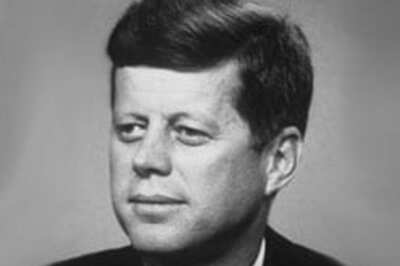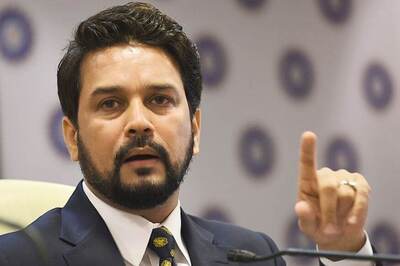
views
New Delhi: After taking over from his mother, newly appointed Congress president, in his opening remarks at the Congress’s plenary in March 2018, said that he had to unite the seniors and the youth to give a new direction to the party. In Rajasthan and Madhya Pradesh, the Congress chief has done just that.
There is no substitute for experience and seniority and this holds true for Rahul Gandhi’s Congress as well. The decision to appoint Ashok Gehlot as the Chief Minister of Rajasthan and Kamal Nath as the Chief Minister of Madhya Pradesh underscores the value that the veterans hold in the party.
In November 2015, the then president of the Congress party, Sonia Gandhi appointed Captain Amarinder Singh as the head of the Punjab Congress. The state were to go to polls in 2017 and Captain was the Congress’s best bet. But this decision came after months of factionalism in the Congress unit of Punjab.
On one occasion, the now Chief Minister of Punjab Captain Amarinder, during the course of his never ending wait to be appointed as the party in charge in Punjab, told this reporter that Rahul Gandhi was oblivious to the affairs of the party and would “never bother to return calls or messages or even respond to emails”.
The frustration stemmed from the fact that around the same time Rahul Gandhi’s vacations abroad were hitting headlines and Punjab strongman Captain Amarinder was staying away from Parliament. After Captain’s appointment as the Pradesh in charge of Punjab, Rahul’s man, Bajwa, who had made way for Captain, later found a comfortable place as a member of Parliament in Rajya Sabha. Fourteen months later, in February 2017, Captain won Punjab for the Congress. The decision to appoint him as Pradesh Congress chief was seen as a masterstroke. It was Sonia Gandhi’s, but the then Congress president-in-waiting, Rahul Gandhi’s approval was taken.
What was also noticed at that point in time was Rahul Gandhi’s willingness to take the old along. The perception that he would do his own thing once at the helm of affairs was changing. But this was gradual. Prior to his elevation as party chief, several pundits wrote obituaries of veteran Congressmen. The question were raised time and again about how would a relatively young Rahul Gandhi work with the ostensibly conservative or even a stubborn old guard.
In his assertions as in charge of the Indian Youth Congress and the National Students Union of India, he sent out a message loud and clear: that the young were the future of the party.
A former general secretary of the Congress who was recently divested of his powers, lamented on this time and again before Rahul Gandhi was appointed as the party’s president, not hiding his disappointment on the inevitable change of guard in the party and what it would mean for Mrs Gandhi’s trusted aides like himself.
In choosing the chief ministers in Rajasthan and Madhya Pradesh, the Congress chief did just that.
In Madhya Pradesh, the party’s chief whip in Lok Sabha Jyotiraditya Scindia was made the campaign manager. But Rahul Gandhi chose nine time MP and the party chief in MP Nath. Scindia will continue in his role in all likelihood and be by Rahul Gandhi’s side as the country goes to the Lok Sabha elections next year. In Rajasthan, Sachin Pilot, the man in charge of leading the Congress to victory, by a thin margin albeit, had to settle for the deputy chief minister’s post. Congress veteran Ashok Gehlot, a two time chief minister of Rajasthan, got the top job.
Gehlot, in his capacity as the general secretary in charge of Gujarat, had ensured a decent performance for the Congress in the polls held in PM Modi’s home state. Gehlot also has to be credited with the Congress’s good tally in Karnataka. The party ended up forming a coalition government with the Janata Dal Secular in the southern state only reaffirming Gehlot’s excellent organizational skills.
In Rajasthan, Rahul Gandhi managed to broker peace. The state sends 25 members of Parliament to Lok Sabha. The Congress could not afford a split in the party unit. His attempt to unite the young and the old as he had promised succeeded.
Veteran leader CP Joshi, who himself had contested and won from Rajasthan summed it up in a tweet. ‘ My sincere thanks to Sh Rahul GandhiJi on listening to the voice of the millions of people of #Rajasthan by giving proper representation space to the experience and the young generation in the new #Congress government of the state .’ he wrote.
Another example of Rahul Gandhi’s non-radical style of functioning was the constitution of the all-important Congress Working Committee a few months ago. A mix of the old and new,
Rahul Gandhi kept veterans like Janardhan Dwivedi, Kamal Nath, Digvijaya Singh, Karan Singh, CP Joshi, BK Hariprasad, and Sushil Kumar Shinde out of the CWC. Some of these leaders were seen as non-performers. But at the same time, seniors and go getters like Ghulam Nabi Azad, Mallikarjun Kharge and Ashok Gehlot retained their positions as members of the CWC. New generation leaders like first time MP Gaurav Gogoi and chiefs of party's frontal organisations apart from president of the party's student wing National Students' Union of India found their names in the newly constituted CWC.
In another move showing Gandhi’s well calculated strategy to maximize the potential of the veterans was the appointment of Sonia Gandhi’s former political secretary Ahmed Patel as the party treasurer. This was an overhaul of the old guard in the party. The subsequent reshuffling in the organization of the AICC was also reflective of the balancing act that Rahul Gandhi had done, sending out a message that he needs both the young and old to halt the Modi-Shah juggernaut in the months to come.




















Comments
0 comment